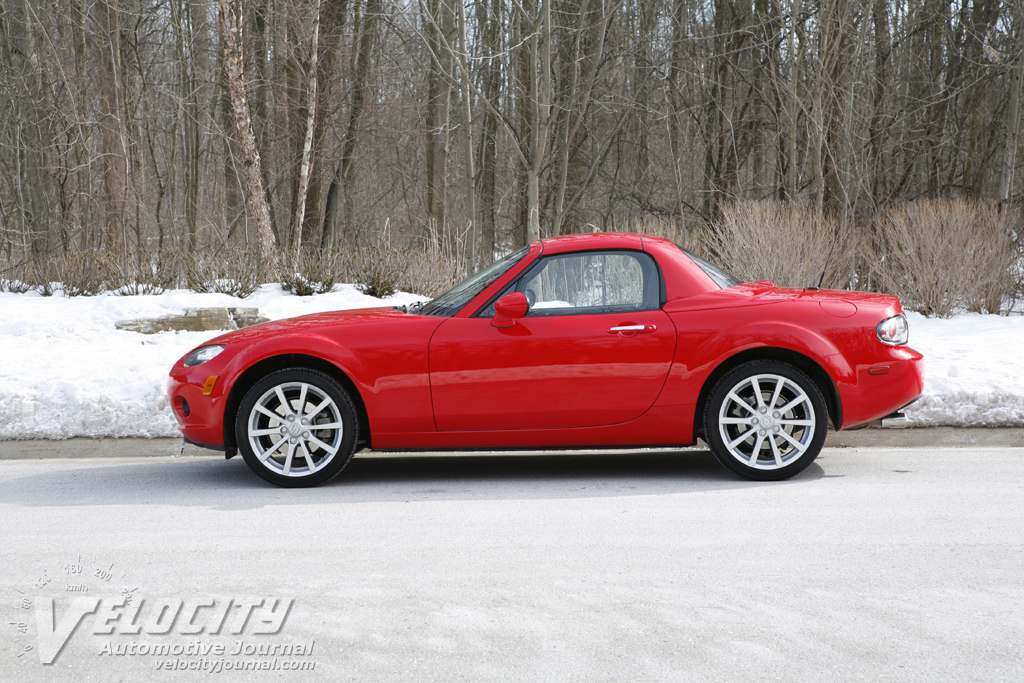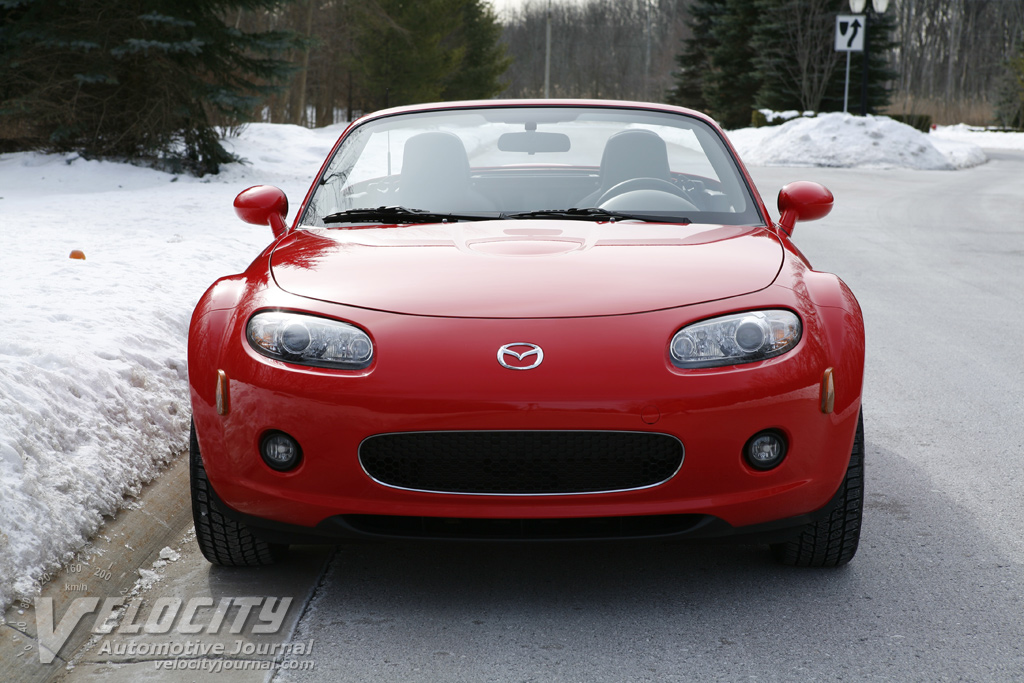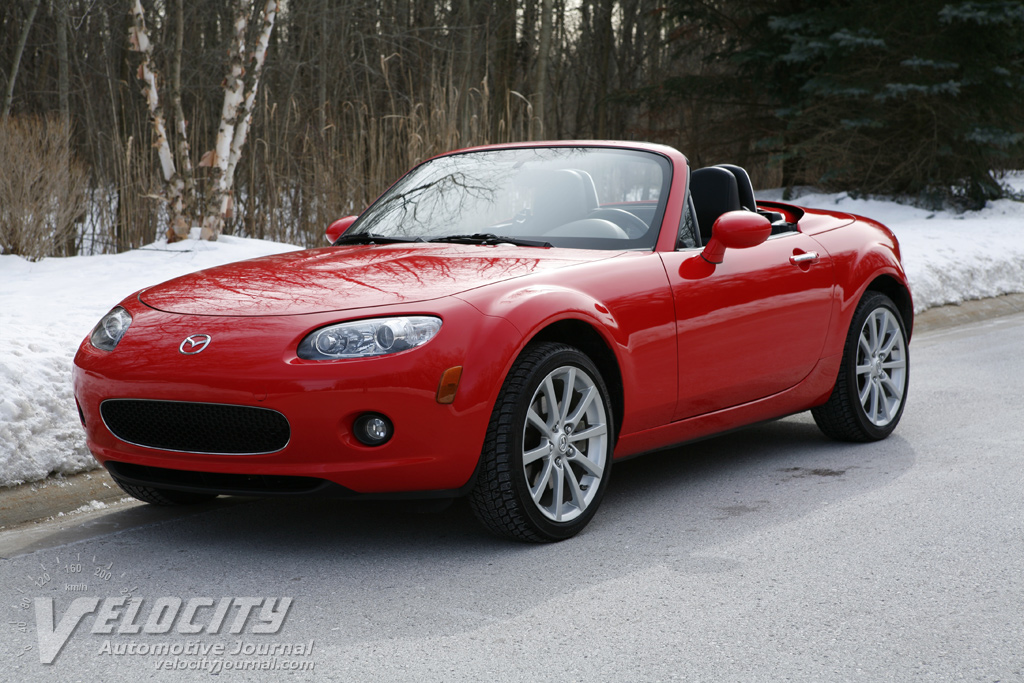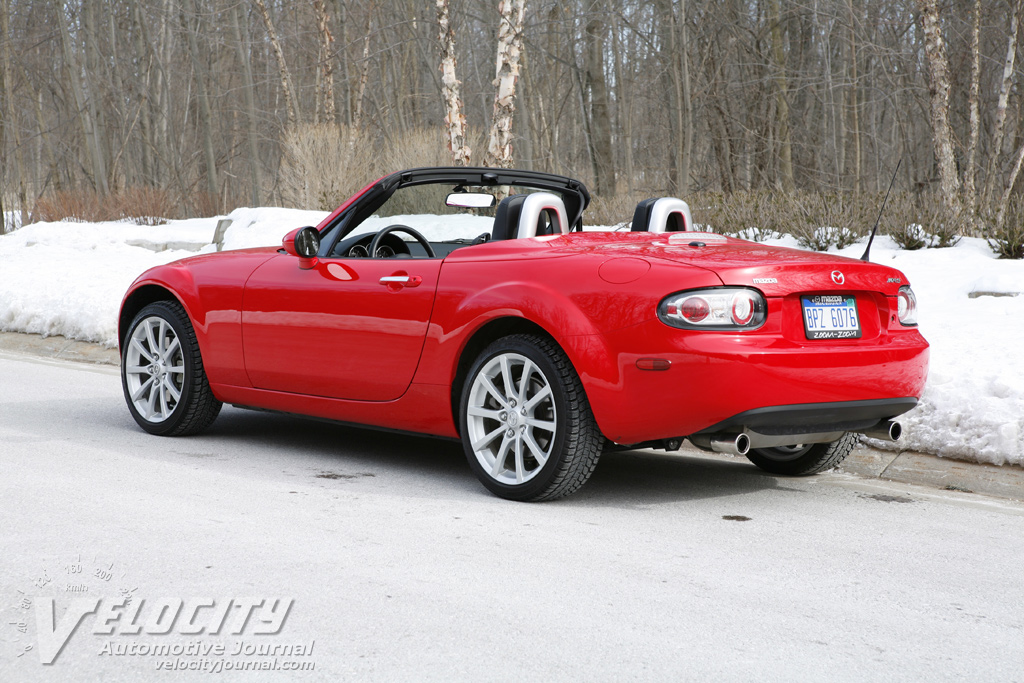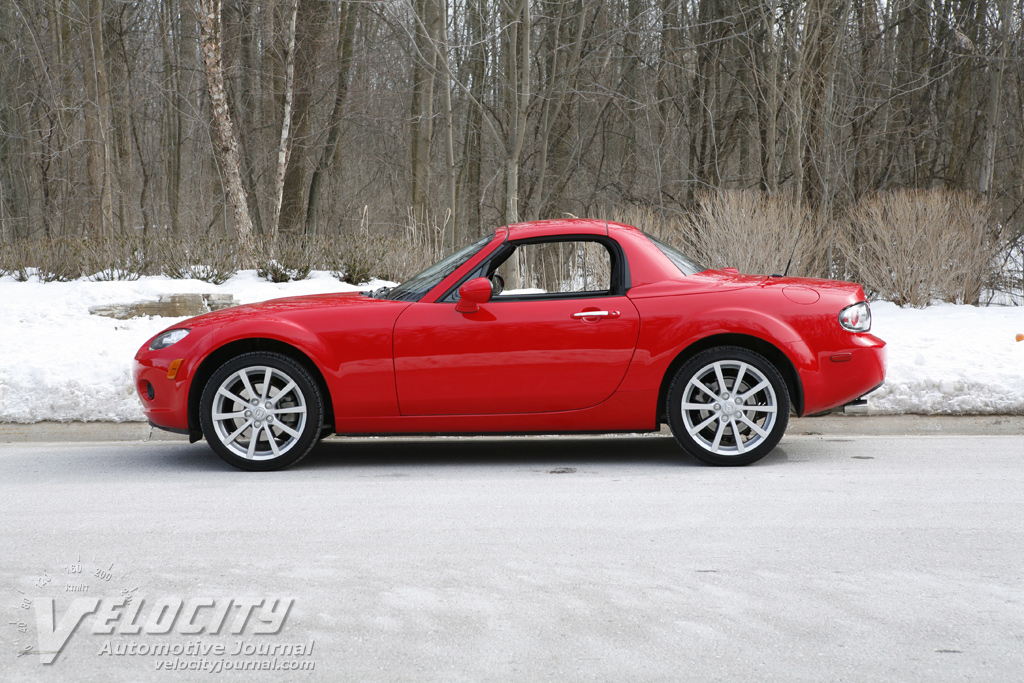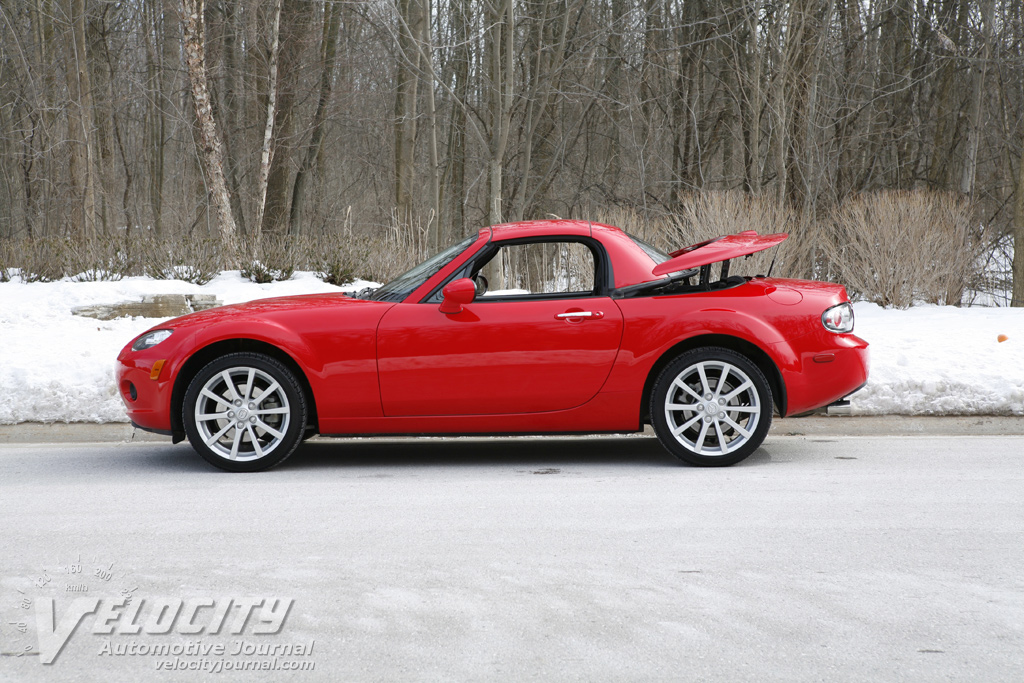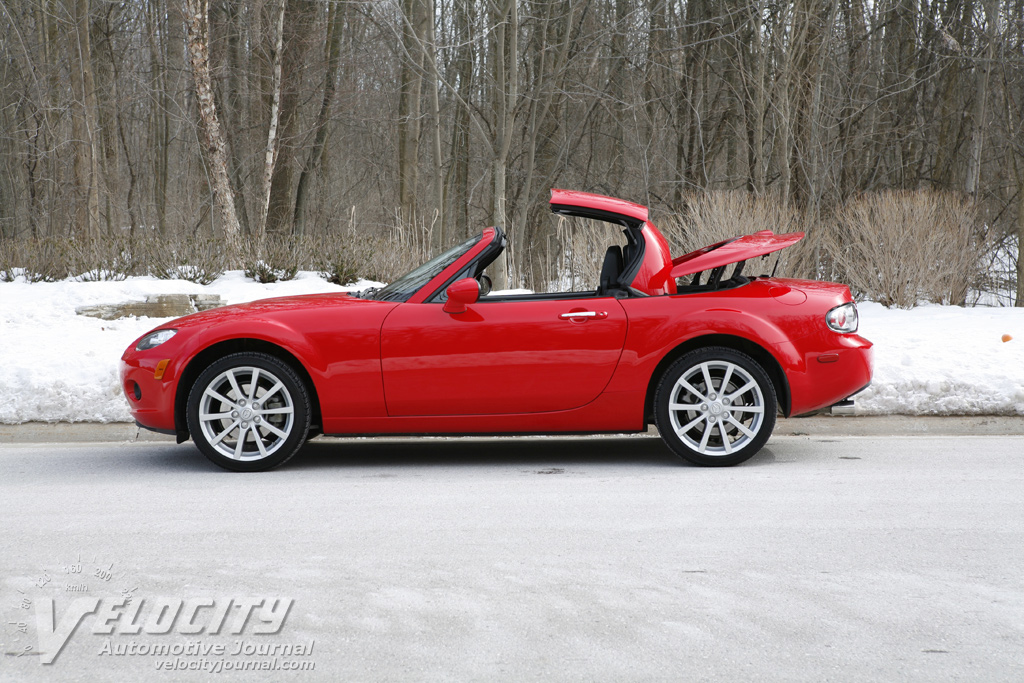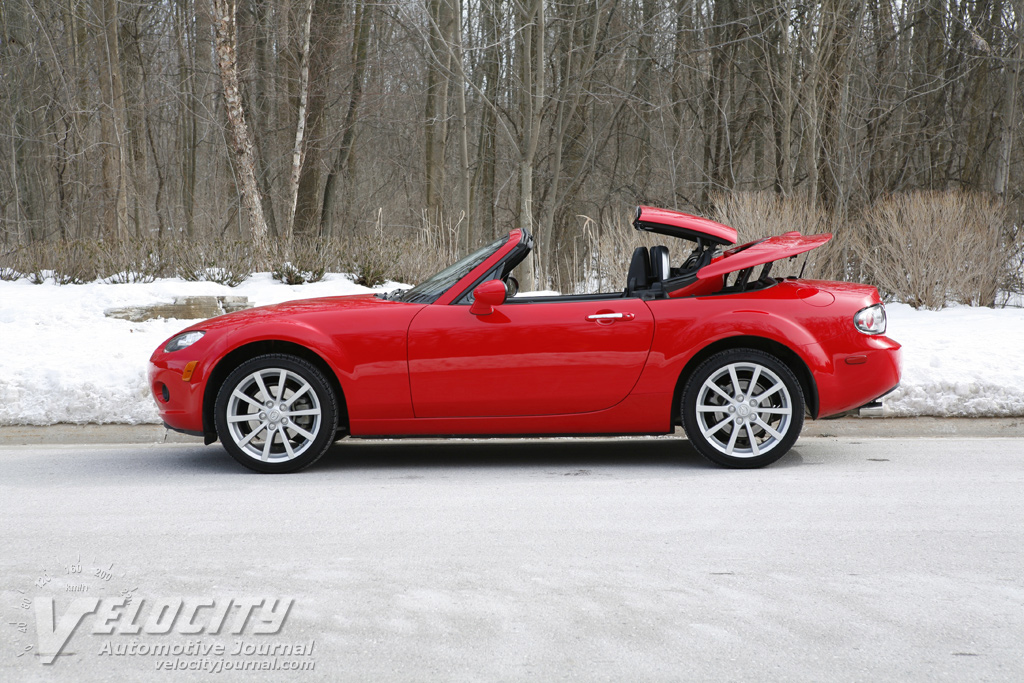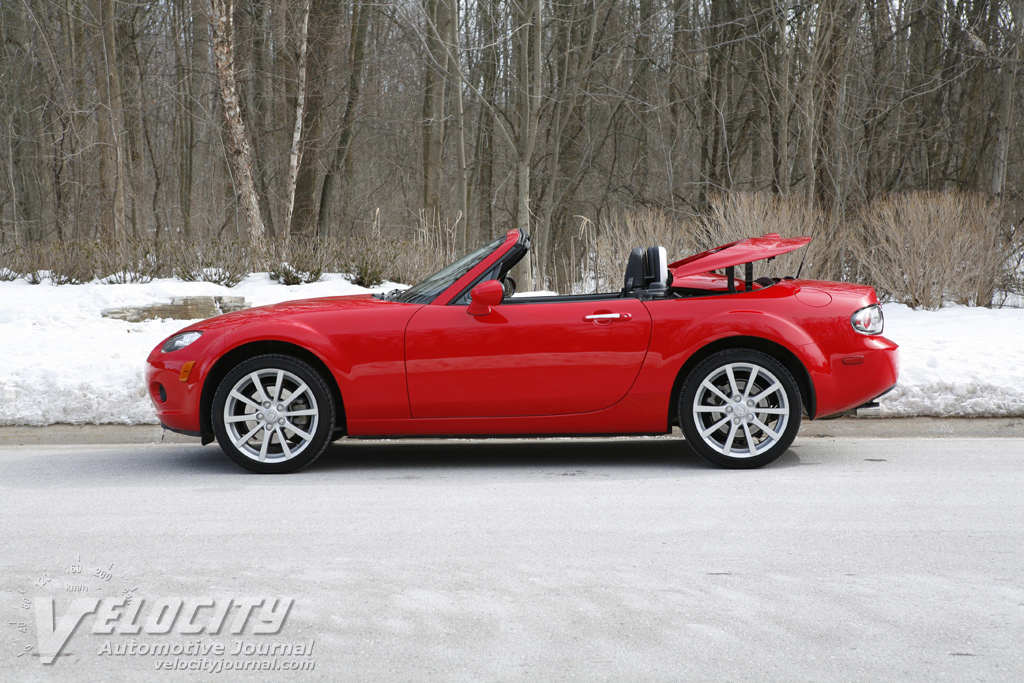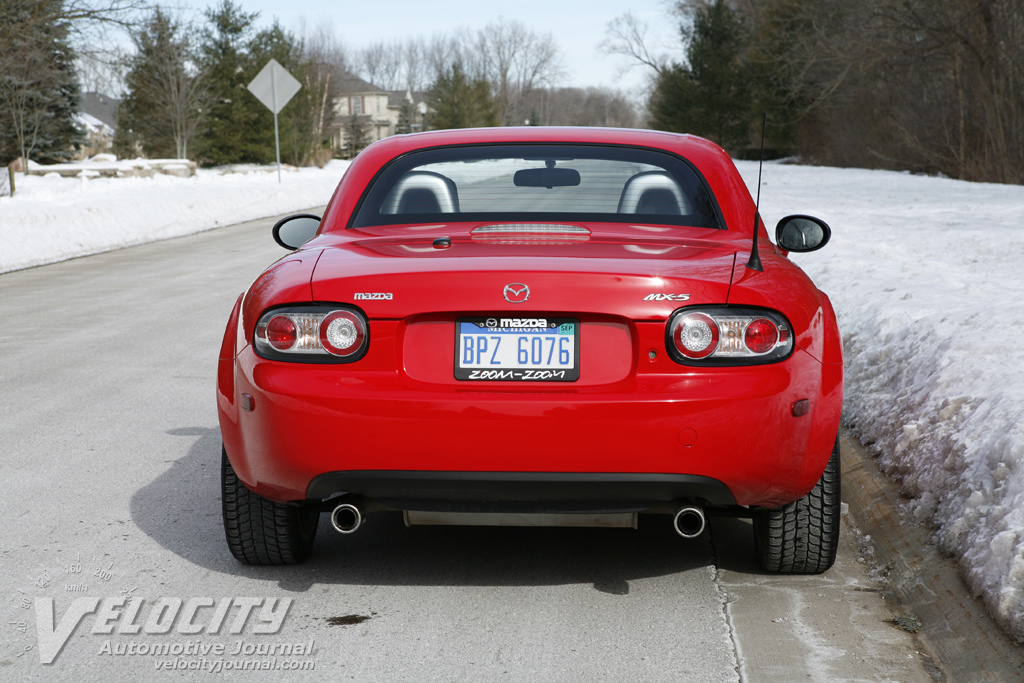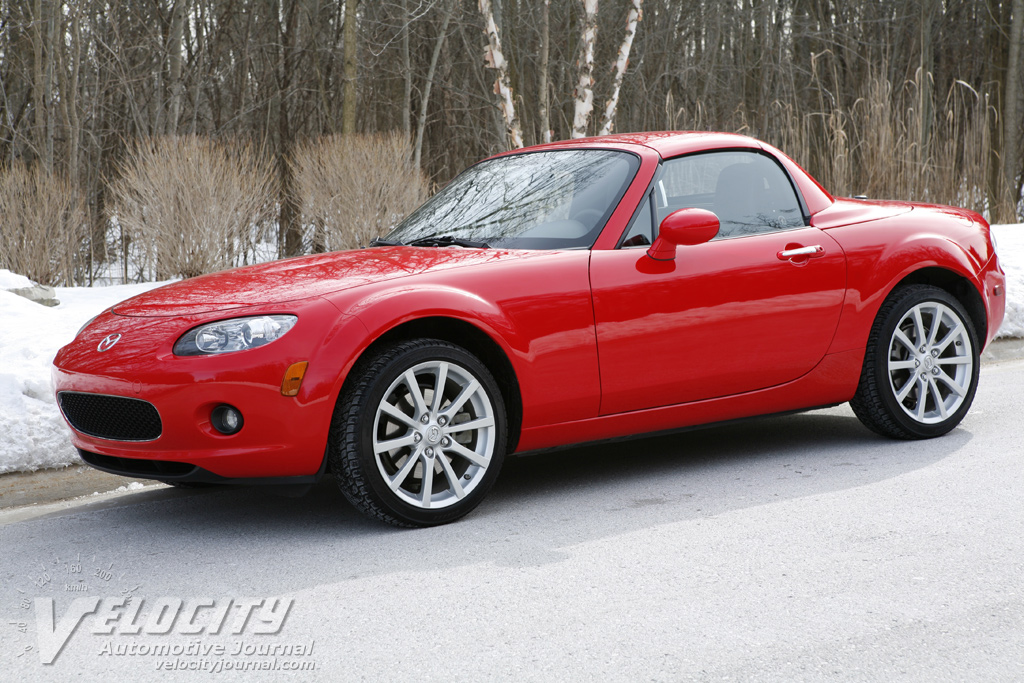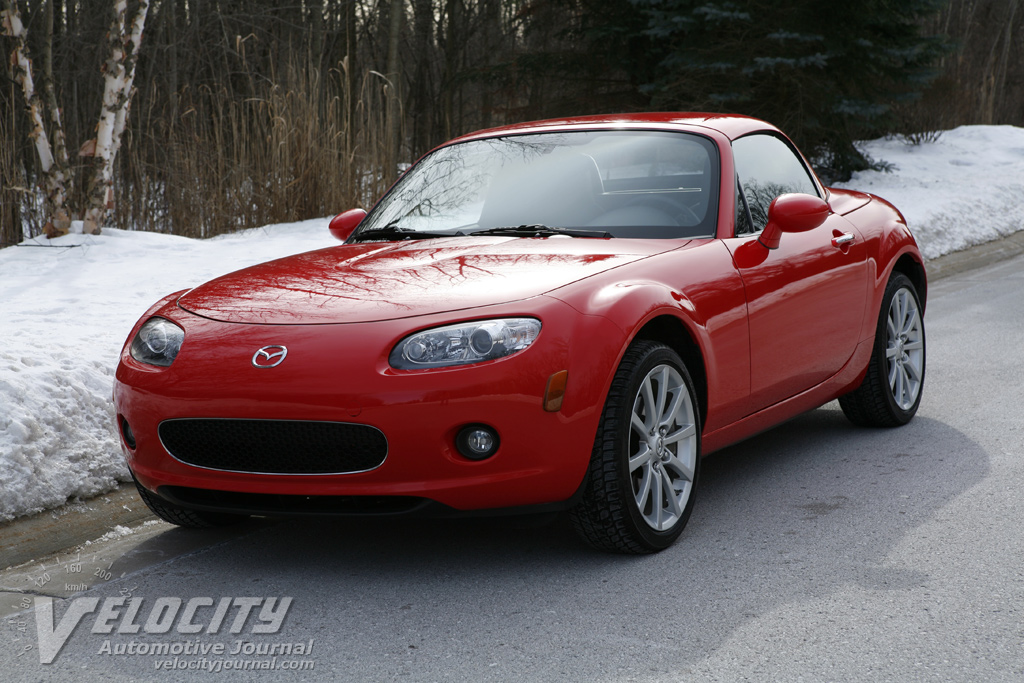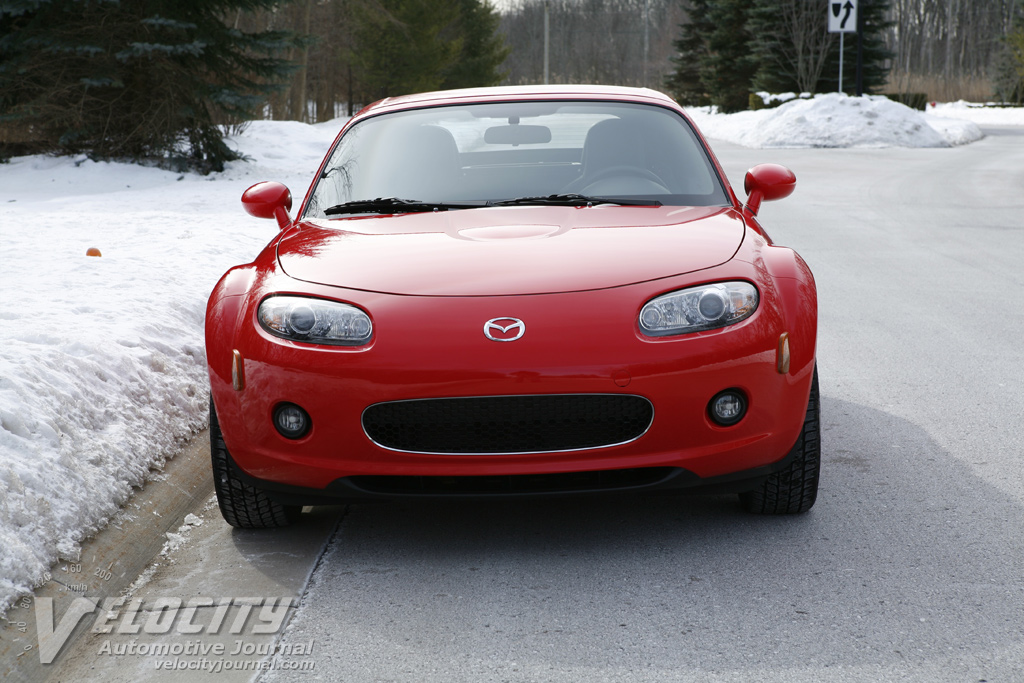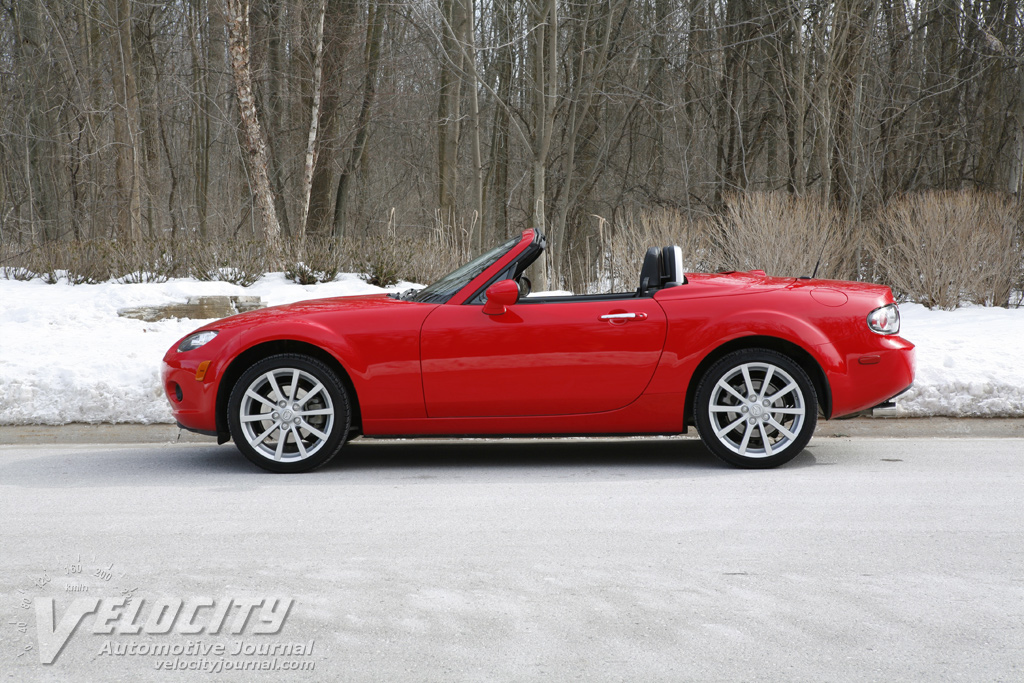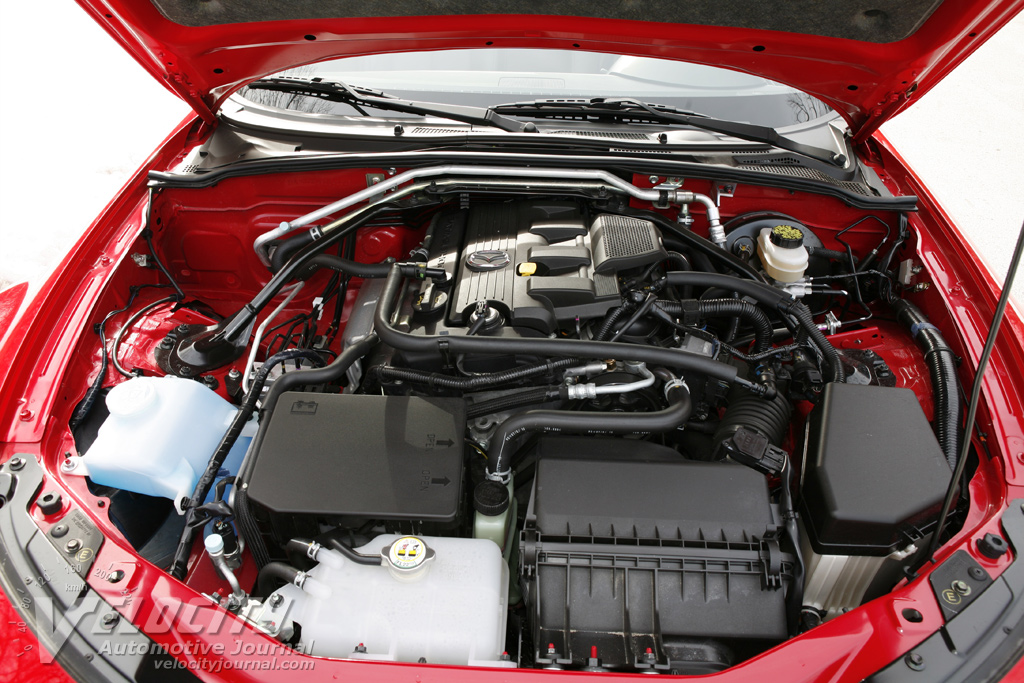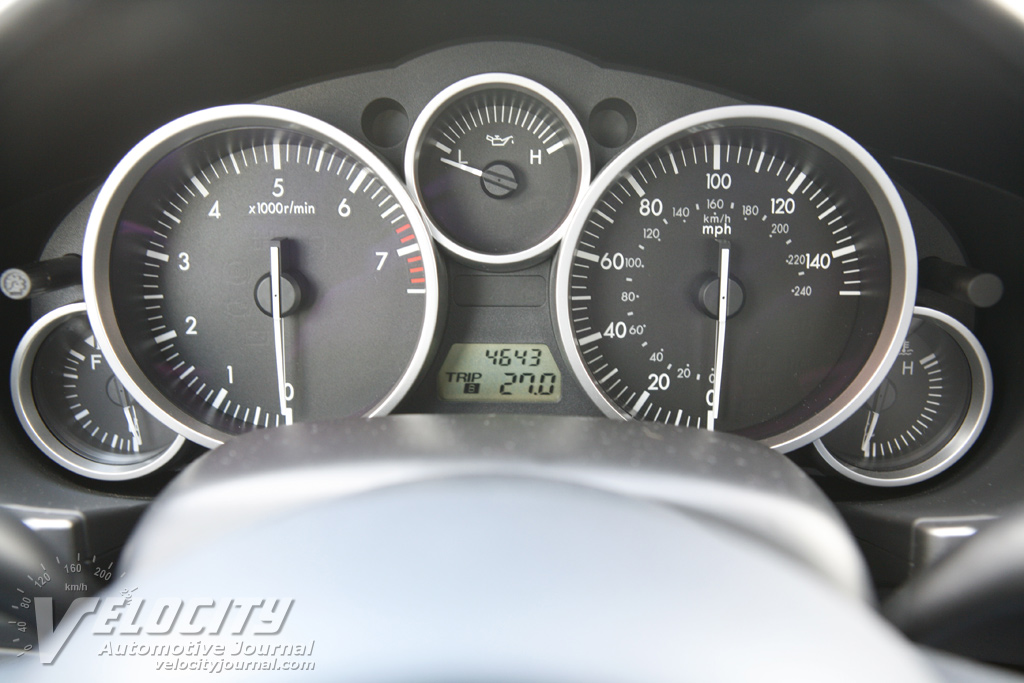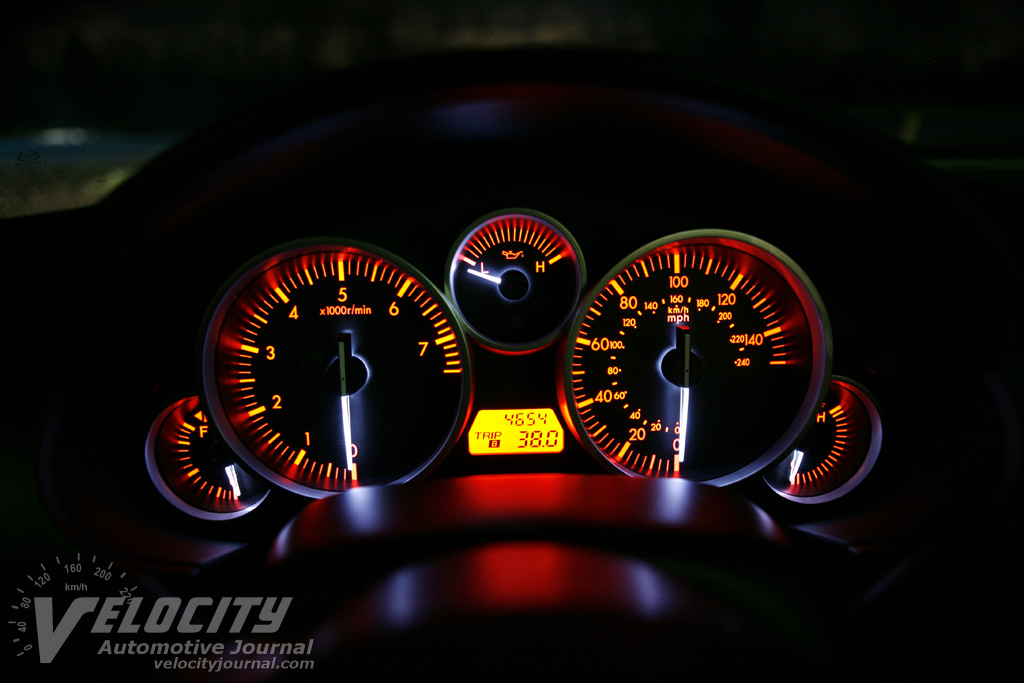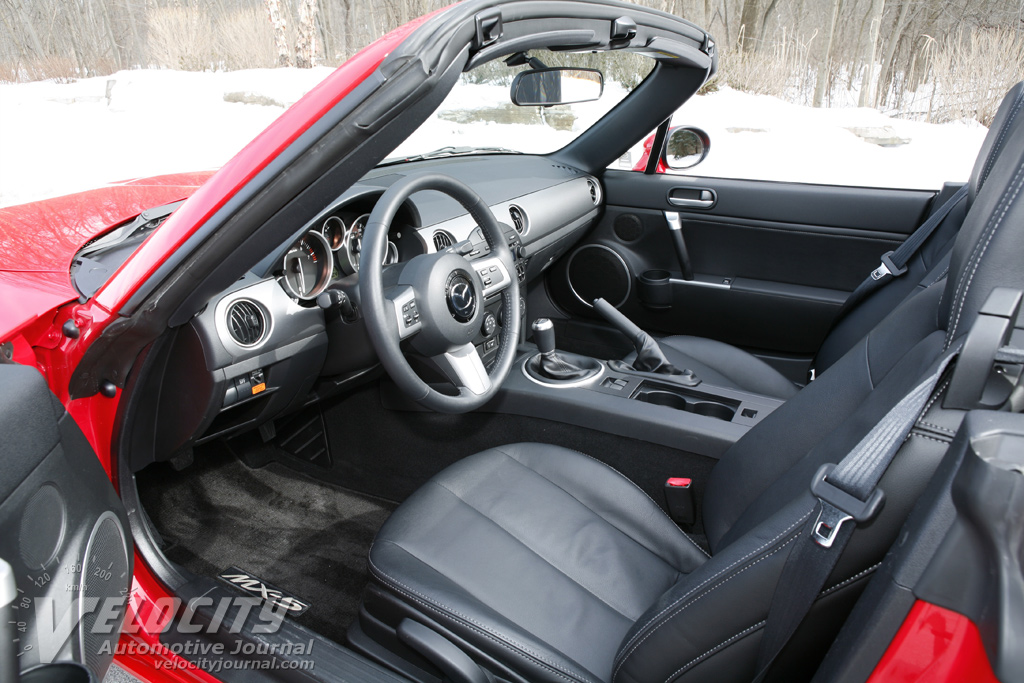2008 Mazda MX-5 Grand Touring PRHT
02/28/2008
Shahed Hussain
The Miata used to be the only affordable convertible sports car. Introduced in 1989, the MX-5 introduced Americans to the Japanese interpretation of the classic 2-seat roadster. Competition from the Honda S2000, and more recently, the Pontiac Solstice and Saturn Sky forced Mazda to differentiate the Miata from its rivals. So Mazda's engineers designed an elegant power retractable hardtop, which allowed Mazda to emulate sports cars such as the Mercedes-Benz SLK, but at a far more attractive price.
Our test vehicle was a fully equipped Grand Touring PRHT model with a base price of $26,760. Options included a Sirius satellite radio ($430), Suspension Package ($500), Interior Trim Package ($515), and Premium Package ($1,250). The grand total was $30,050, which included the $595 destination charge. Aside from the satellite radio and Interior Trim package, we would have equipped the Miata with the same option packages as on our test vehicle. The suspension package includes Bilstein dampers, a sport tuned suspension, and a limited-slip differential; while the Premium Package adds keyless entry, anti-theft alarm, HID headlights, and dynamic stability control (DSC).
The optional Interior Trim package trades glossy piano black accents for aluminum-look trim (which is closer to gunmetal in appearance) on the dash and door panels. Silver plastic trim adorns the steering wheel spokes, shifter knob and bezel, door handles, gauges, and vents. The upper dashboard and door panels are covered with durable pebble-grained hard black plastic. A cleverly designed button on the center of each vent turns airflow on or off. Three clearly marked HVAC knobs control ventilation in the cockpit, with special settings to optimize airflow direction for comfortable top-down cruising. The fuel filler release is hidden in a small compartment between the upper seatbacks. A standard Bose 6-CD audio system cranks out enough volume to be usable with the top down. Sirius satellite radio is optional, but the receiver changes channels too slowly; so it is easy to overshoot the selected channel.
A full set of gauges include a 7,500 RPM tachometer, 150-MPH speedometer, as well as gauges for fuel level, coolant, and oil pressure. By day, the white-on-black markings are easily legible, but at night, the red backlighting is harder to read. The steering wheel has buttons for audio and cruise control. A covered 12V power outlet is easily accessible at the bottom of the center stack. As with many manual transmission-equipped cars, drinks in the center console cupholders interfere with proper shifting, so Mazda thoughtfully integrated additional cupholders into the door armrests.
Comfortable and supportive seats are especially important in a sports car. The MX-5 is above average in this regard, but there are a few shortcomings. The standard leather upholstered seats are well bolstered, but are only adjustable for reach and seatback rake. A height adjustment for the seat cushion would be appreciated, as some drivers may find their lower thighs positioned above the seat when driving. Also, passengers with wider posteriors will find that they are sitting above the lower seat bolsters, which could be uncomfortable for extended periods. The Grand Touring model includes standard heated seats. Toggle switches at the bottom of the center stack activate the seat heaters, but offer only one temperature setting.
The new power top only increases the appeal of the Miata: simply press the release button on the windshield header and then tap the retract button on the dashboard. The two-piece top neatly retracts behind the seats, to be then hidden by a hard tonneau cover. To raise the top, a separate button on the dash reverses the process. As an added bonus, the hardtop has a headliner, which significantly reduces road noise compared to its fabric counterpart. Headroom is acceptable for sub-6 ft. drivers, but those taller than that may feel cramped with the top up. The precision and simplicity of the hardtop mechanism is a testament to elegant, efficient design. Amazingly, this mechanical marvel adds only 75 lbs. to the Miata's curb weight (2,573 lbs. for the PRHT).
Top down motoring in the MX-5 is quite comfortable up to about 50 mph. Wind noise is tolerable, as the folding mesh wind blocker between the seats effectively cuts turbulence. If the ventilation system is set correctly, warm air rushes over the passengers' legs and shoulders. Cruising with the top retracted in 50-60 deg. F temperatures is no problem. When the weather becomes chilly, the snug hardtop is only a button push away.
As expected, the trunk compartment is small, shallow, and best suited for soft luggage. A rolling carry-on suitcase will fit, but leaves room for little else. Mazda managed to cleverly package the retractable top and its actuating mechanism with no reduction in trunk volume, which remains at 5.3 cu. ft.
The Miata's MZR 2.0L inline-4 cranks out a respectable 166-bhp @ 6,700 RPM (with a manual transmission), which finally moves the MX-5's acceleration from merely adequate to genuinely quick. Although peak torque of 140 lb.-ft arrives at 5,000 RPM, the short 4.100:1 final drive ratio makes the most of the available torque; launching at 3,000 RPM ensures a quick takeoff from a standstill. Throttle response is linear up to about 5,000 RPM, after which it flattens out. We rarely found it necessary to redline the engine even in spirited driving. Despite our enthusiasm for this powerplant, the inline-4 isn't particularly quiet or refined, especially compared to similar Toyota or Honda engines.
As transmissions go, the standard 6-speed manual is a slick unit (base Miatas get a 5-speed manual). This is a close-ratio gearbox that always has the right gear for corner carving; shift gates are closely spaced, but there is just enough "notchiness" to select the correct gear. The short throw lever is topped with a machined aluminum knob. A light, progressive clutch assists with smooth shifts. The short gearing results in buzzy cruising at 70 MPH, where the engine spins at 3,500 RPM. We have driven a Miata equipped with the optional 6-speed automatic, a reasonable option for manual transmission-averse customers, but the engine output drops to 158-bhp with the automatic. However, the automatic transmission's taller 0.582:1 6th gear ratio (vs. 0.832:1 for the 6-speed manual) cuts engine drone substantially on the freeway.
Mazda expended considerable engineering resources to ensure that the new MX-5 was only slightly heavier than the 2nd generation car. This is quite impressive, since the Miata now has side-impact airbags, a stiffer chassis, and a larger engine. Aluminum was used on the hood, deck lid, and chassis components to limit weight increases. The rigid chassis is the greatest contributor to the MX-5's much improved handling. Cowl shake, body shudder over bumps, and squeaks and rattles are nearly nonexistent. With the hardtop up, the body seems almost coupe-like in its rigidity. While the 91.7-inch wheelbase contributes to its razor-sharp handling, freeway hop on some concrete surfaces is an unavoidable consequence. As long distance cruiser, the MX-5 is out of its element, but this Mazda is more suited for winding two-lane roads than the highway.
As enthusiasts of this roadster know, it's not about maximum g-force, but the quick turn-in response and nimble reflexes that set the MX-5 apart from any other competitor. Crank the steering wheel, and the MX-5 obediently follows the intended arc. Understeer in almost nonexistent; while mild power-on oversteer is a distinct possibility in 1st or 2nd gear. Steering feel is superb; the driver seems almost directly connected to the road. Of course, the downside of the unfiltered steering is noticeable kickback over bumps. Unsurprisingly, the featherweight Miata is also susceptible to crosswinds, which tend to toss it around.
Previous Miatas we reviewed had grippy Michelin Pilot P205/45R17 tires, but due to winter driving conditions, our test vehicle was equipped with Bridgestone Blizzak LM25 run-flat tires. While the Bridgestones have excellent snow traction, their stiff sidewalls contributes to a more brittle ride than the standard Michelins. On potholed roads, the Blizzaks crash through, sending shudders through the chassis. Base Miatas are available with 16-inch wheels and 205/50R16 tires, which may offer a more compliant ride.
Mazda tuned the optional Dynamic Stability Control (DSC) to be unobtrusive in normal driving. At low speeds on snow and ice, the DSC allows minor oversteer before it intervenes, while the optional limited-slip differential and traction control limits wheelspin to manageable levels. Drivers planning to drive their Miatas in snow and ice would do well to invest in a set of snow tires and select the DSC option, as this combination is essential for winter conditions.
The Miata is easily one of the most compelling convertible sports cars available. While the newer Pontiac Solstice GXP, Saturn Sky Redline, and the Honda S2000 are slightly faster, none of these competitors have the convenience of the Mazda's hardtop, or its razor-sharp handling. For the 3rd generation Miata, Mazda retained all the characteristics that made it such an appealing roadster, with the added security of a power hardtop that sets it apart from any other sports car in its class.

